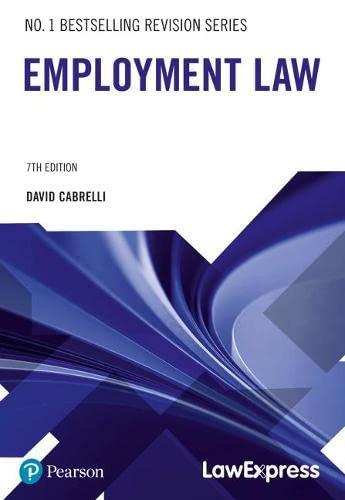Question
Q 5.1: What principle did the Lochner decision stand for? How did later cases (such as West Coast Hotel v. Parrish, Nebbia, and Lee Optical)
Q 5.1: What principle did the Lochner decision stand for? How did later cases (such as West Coast Hotel v. Parrish, Nebbia, and Lee Optical) modify that principle? Does the Due Process clause protect economic liberty today? TQ 5.2: Was the use of contraceptives found to be a fundamental right in Griswold? If so, explain how. TQ 5.3: What did the Court hold in Roe v. Wade? Did the Court's recognition of a constitutional right to abortion preclude state restrictions on abortion? Why or why not? TQ 5.4: What was the Court's holding in Casey and how did it differ from the holding in Roe? What was the Court's justification for departing from the approach in Roe? After Casey, what, if any, restrictions may states place on abortions?
1. Alexander: Book, pp. 99-121
2. Chemerinsky: 10.1 Introduction: Constitutional Bases for Fundamental Rights (pp. 856 - 862)
10.3.2 The Right to Purchase and Use Contraceptives: Griswold v. Connecticut (pp. 881 - 885) 10.3.3.1 The Right to Abortion from Roe to Casey (pp. 885 - 897)
Step by Step Solution
There are 3 Steps involved in it
Step: 1

Get Instant Access to Expert-Tailored Solutions
See step-by-step solutions with expert insights and AI powered tools for academic success
Step: 2

Step: 3

Ace Your Homework with AI
Get the answers you need in no time with our AI-driven, step-by-step assistance
Get Started


